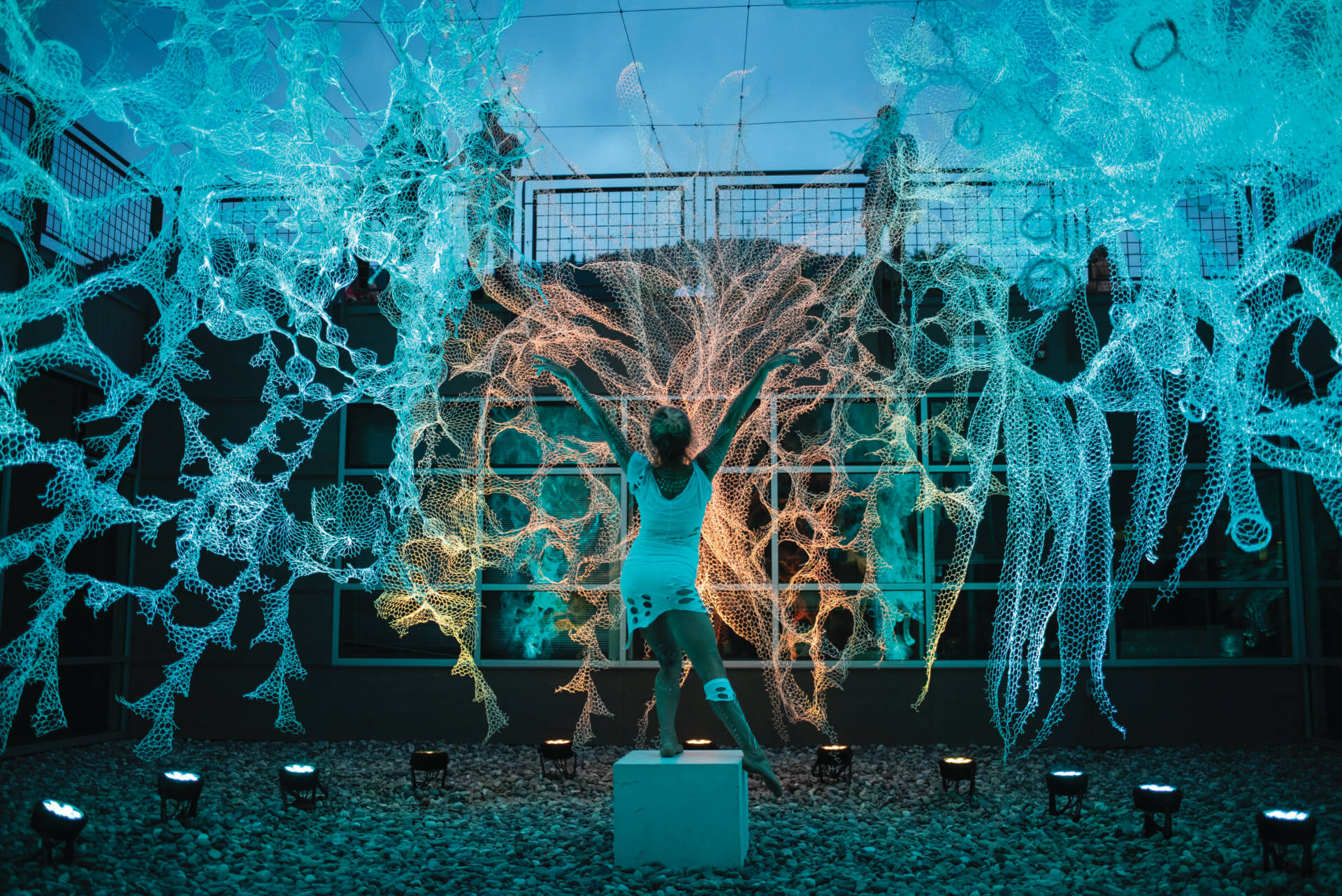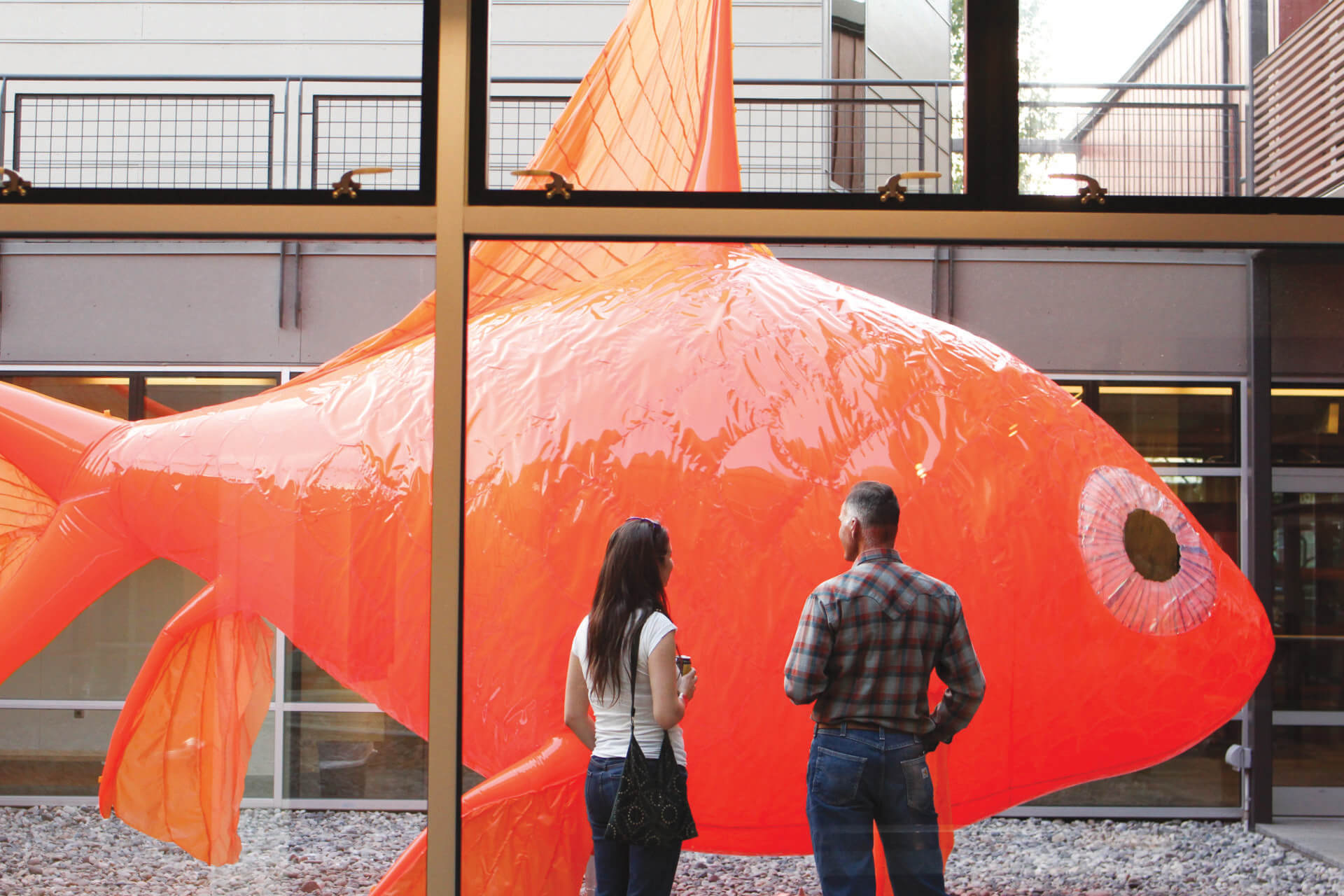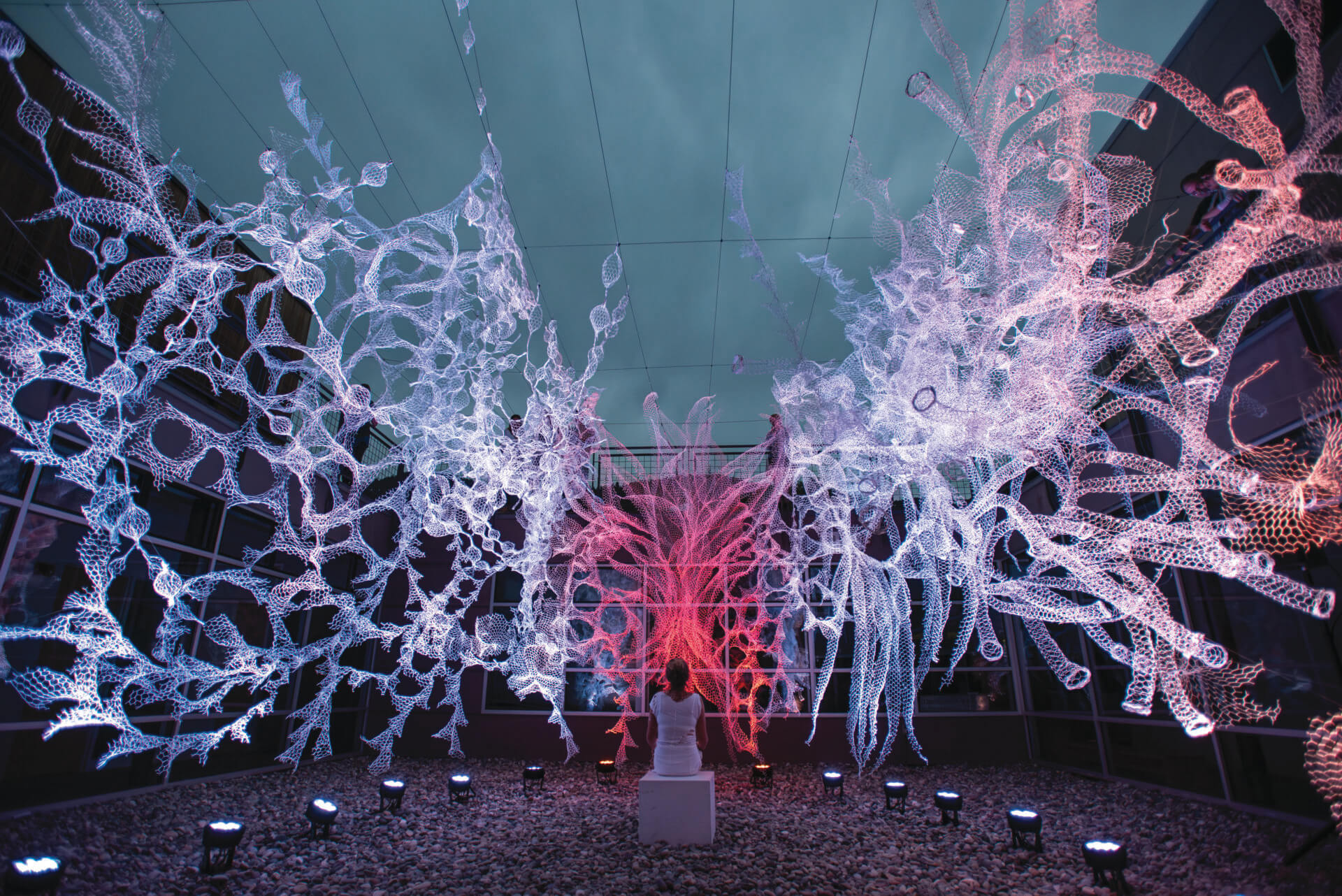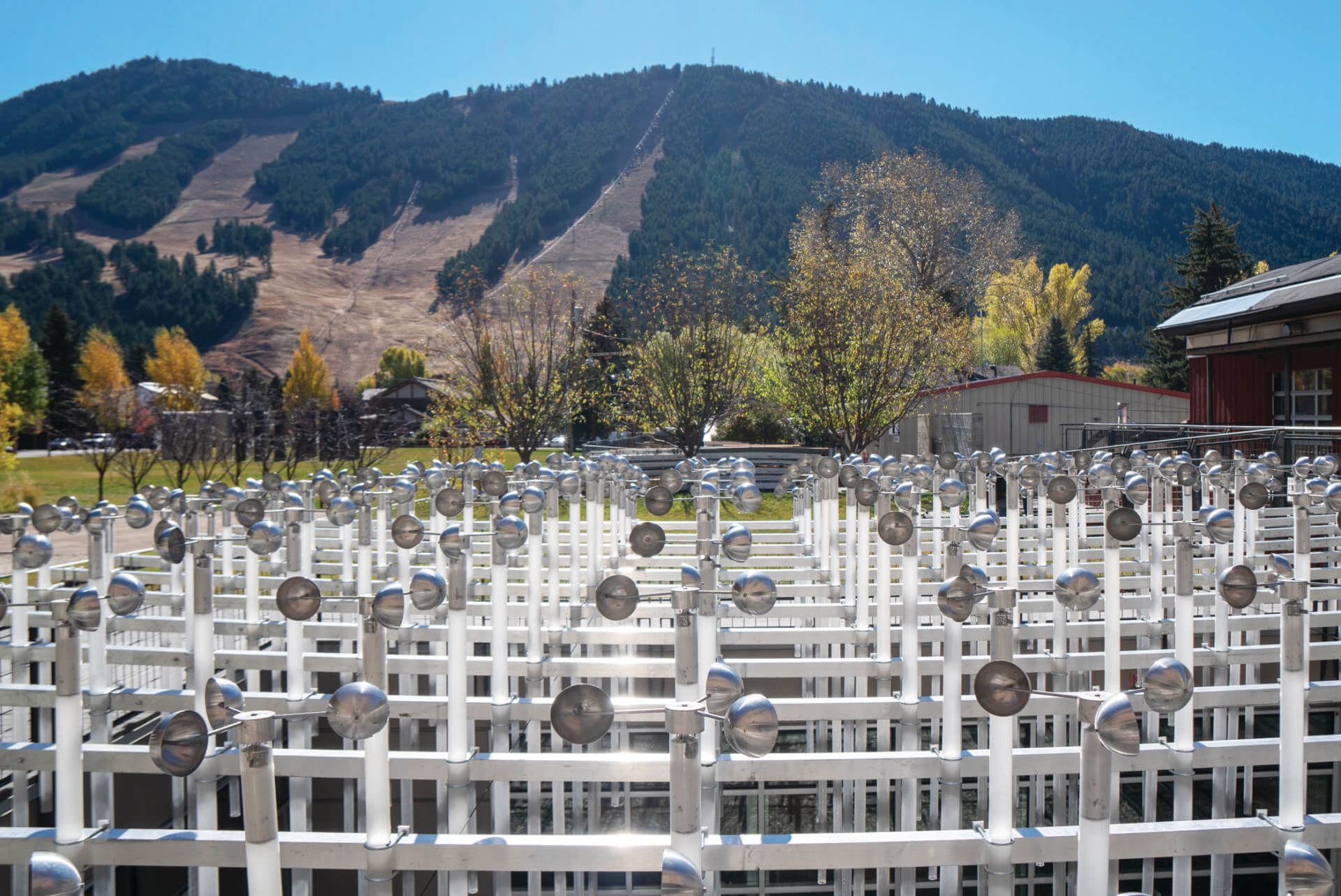Read The
Current Issue
The Courtyard
A hidden-in-plain-sight space offers the opportunity to see public art installations that range from the whimsical to the mechanical.

//By Samantha Simma
More than 100,000 audience members attend events in and around the Center for the Arts campus every year, and at the center of it all is an open-air courtyard measuring 30 by 28 feet, with glass walls on three sides. Within this courtyard, The Center hosts rotating art installments that can be seen from multiple vantage points: The Center conference room, the Theater Gallery hallway, the Glenwood Street entrance, and from the green space above connected to The Center Park.
Submissions to have art displayed in this space are accepted from both emerging and established artists and are evaluated by the Campus Exhibitions Committee. “We are looking for installations that play off the unique architectural design of the inner courtyard and that will resonate and strike a chord with a broad range of audience members of all ages on our campus,” says The Center’s creative initiatives director Oona Doherty. “With these rotating exhibits, we are highlighting that The Center is not simply a building, but so much more, and that our spaces are meant to showcase and highlight diverse creative voices and perspectives.” The art in The Courtyard changes, although not on a set schedule. “Installations sometimes rotate annually, or biannually, or on occasion every three to five years,” Doherty says. Going up early this summer is LandSignals by Rachel Olivia Berg. The installation is in conjunction with JH Public Art’s other LandSignals installations. Here, we take a look back at some of our favorite courtyard creations.

The Fishbowl by Bland Hoke and Bland Design LLC
A former staff artist at Jackson Hole Public Art, Jackson Hole-based Bland Hoke has had multiple art installations on display around Jackson Hole, but none more memorable than The Fishbowl, which was installed in The Center’s courtyard in 2017. In the artist’s proposal, Hoke stated a desire for the project to “stretch the imagination and provoke a sense of wonder” in onlookers. Otto, the oversized 3D goldfish, was inspired by the children’s book A Fish Out of Water, in which a young boy overfeeds his goldfish—causing it to grow to the size of a whale. “As we plied into the historical significance of goldfish in art and reminisced of winning goldfish at the fair (true story), we found ourselves enthralled by the creative capacity of The Courtyard,” Hoke says about the design process. Hoke’s fabric fish was suspended by wires and kept inflated by a forced-air system. During its residency, the goldfish’s fabric developed a gradient of color from UV exposure, further enhancing Otto’s orange vinyl scales.

FractaLife by Claudia Bueno, in collaboration with Vadim Levin & Illuminode
“FractaLife is an ode to life at all scales, the life within the life within the life… hence the word ‘fractal,’ patterns within patterns,” says Venezuelan artist Claudia Bueno. Installed in The Center’s courtyard from summer 2016 through the following spring, the light-art installation was described by viewers as psychedelic and/or magical. Inspired by molecular patterns, networks, life, energy, and the universe at large, Bueno posed the question, “What if we zoomed into the hexagon that is us, only to find another multidimensional, interconnected network that represents our life and its endless layers?” Her answer was an ethereal artwork constructed from painted wire netting that, at dusk, was illuminated by an LED light system. Aiming to encourage interaction with the art, Bueno says of the work’s structure, “Beyond the apparent, there is always more to be discovered. With closer observation, we start seeing subtleties and quiet details. We find the orderly amongst the random.”

The Windmill Project by Patrick Marold
Artist Patrick Marold, of Denver, Colorado, brought The Windmill Project to The Center’s courtyard in 2018. The installment consisted of an array of 200 light-generating windmills suspended in the open space of the courtyard, engaging onlookers from above and below while presenting a living body of light in the evening hours. “This work of art converts the energy of wind into a responsive visual choreography, exhibiting the rhythm of a mechanical process that is collaborating with the harmony and chaos of wind,” Marold says. Aluminum wind-cups atop the windmills rotated and reflected the sun during daylight hours, while at night, each individual unit was illuminated in correlation with the will of the wind. A gentle breeze resulted in a dim glow, while stronger gusts created pulsing waves of light from the exhibit. “The windmills [were] suspended with graduated heights,” Marold says. “Peaking toward the center to allow for optimal exposure to the wind as well as presenting a visual sense of rising, or swelling, light.” JH




